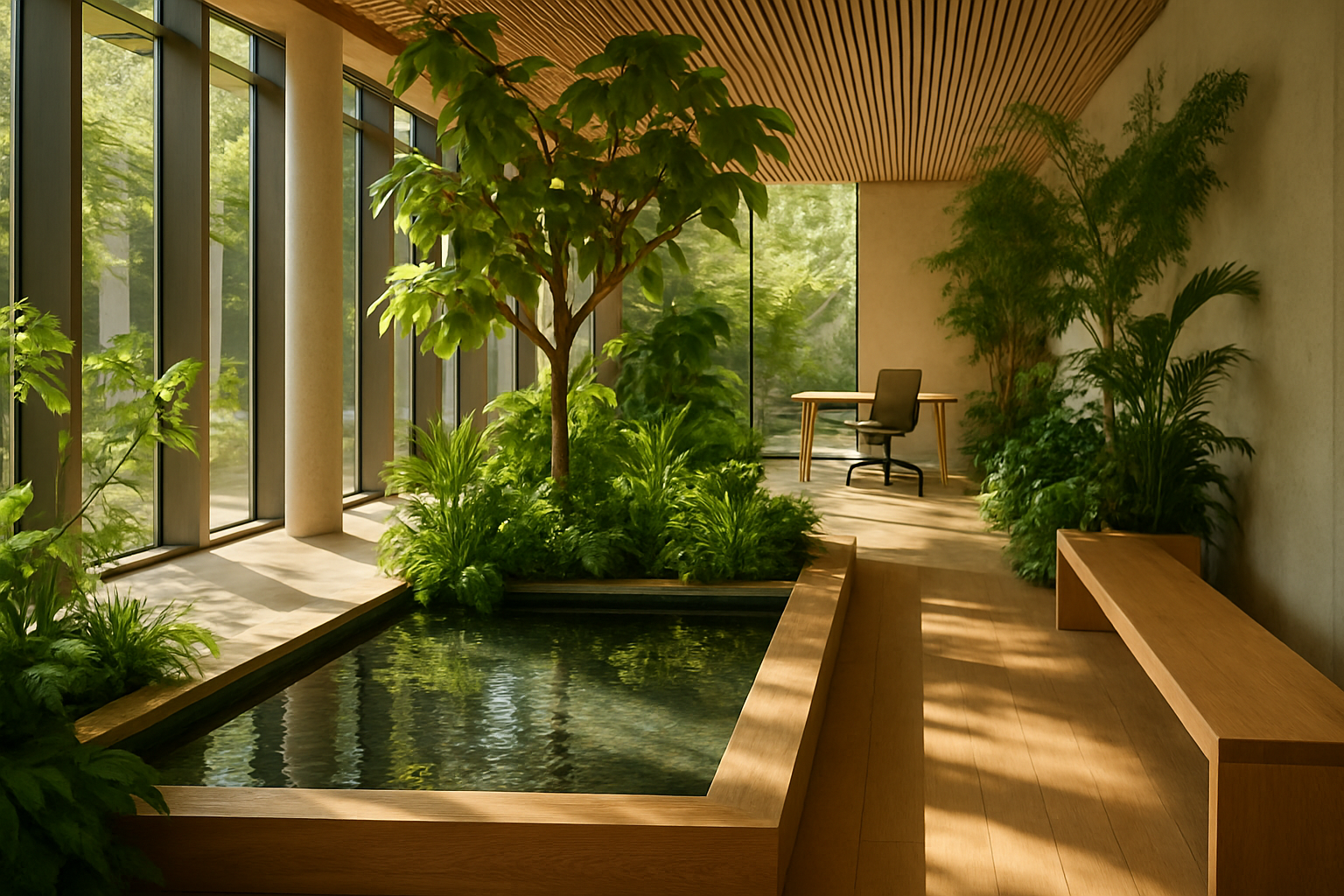Biophilic Design in Industrial Workspaces
Revolutionizing productivity through nature-inspired environments The integration of biophilic design principles in industrial settings is reshaping the traditional workspace paradigm. By incorporating natural elements and mimicking outdoor environments, companies are witnessing unprecedented improvements in employee well-being, productivity, and overall operational efficiency. This innovative approach to industrial architecture and interior design is proving to be a game-changer in the manufacturing sector.

The Origins of Biophilic Design in Industry
The roots of biophilic design can be traced back to the 1980s when biologist Edward O. Wilson proposed the “biophilia hypothesis,” suggesting that humans have an innate tendency to seek connections with nature. While this concept initially found its way into office designs and urban planning, it’s only in recent years that industrial leaders have begun to recognize its potential in manufacturing environments.
Historically, industrial spaces were designed with a singular focus on functionality, often resulting in sterile, artificially lit environments devoid of natural elements. This approach, while seemingly efficient, overlooked the psychological and physiological needs of workers. The shift towards biophilic design in industrial settings marks a significant departure from this traditional mindset, prioritizing human well-being alongside operational efficiency.
Key Elements of Biophilic Design in Industrial Spaces
Implementing biophilic design in industrial environments involves several key strategies. Natural lighting is perhaps the most fundamental aspect, with many facilities now incorporating large windows, skylights, or light tubes to maximize exposure to daylight. This not only reduces energy costs but also helps regulate workers’ circadian rhythms, potentially improving alertness and productivity.
Vegetation is another crucial element. Indoor plants, living walls, and even indoor trees are being integrated into factory floors and warehouses. These not only improve air quality but also provide visual relief and connection to nature. Some facilities have gone as far as creating indoor gardens or courtyards, offering employees spaces for relaxation and rejuvenation during breaks.
Water features, such as fountains or small streams, are also being incorporated. The sound of flowing water can mask industrial noise and create a more soothing environment. Additionally, the use of natural materials like wood and stone in construction and furnishings helps to create a more organic, less artificial atmosphere.
The Impact on Productivity and Well-being
The implementation of biophilic design in industrial settings has shown remarkable results. Studies have reported significant increases in productivity, with some facilities noting up to a 15% boost in output following biophilic renovations. This increase is attributed to reduced stress levels, improved cognitive function, and enhanced creativity among workers.
Employee well-being has also seen marked improvements. Absenteeism rates have decreased in facilities that have adopted biophilic design principles, with some companies reporting up to a 20% reduction in sick days. Furthermore, worker satisfaction and retention rates have improved, leading to reduced turnover costs and a more experienced workforce.
Challenges and Considerations
While the benefits of biophilic design in industrial spaces are clear, implementation does come with challenges. Safety considerations are paramount, especially when integrating natural elements like water features or plants into areas with heavy machinery. Careful planning and risk assessment are essential to ensure that biophilic elements do not interfere with operational safety.
Cost is another significant factor. Initial investments in biophilic renovations can be substantial, particularly for larger facilities. However, many companies are finding that the long-term benefits in terms of increased productivity and reduced energy costs often outweigh the initial expenditure.
Maintenance is also a crucial consideration. Living walls and indoor plants require regular care, and natural lighting solutions may need periodic cleaning or adjustment. Companies must be prepared to allocate resources for the ongoing maintenance of these biophilic elements to ensure their continued effectiveness.
Future Trends and Innovations
As the concept of biophilic design in industrial spaces continues to evolve, several exciting trends are emerging. Virtual reality and augmented reality technologies are being explored as ways to bring nature-inspired experiences to workers in environments where physical implementation of biophilic elements is challenging.
Biomimicry, the practice of emulating nature’s time-tested patterns and strategies, is also gaining traction in industrial design. This approach not only creates more nature-inspired aesthetics but can also lead to more efficient and sustainable industrial processes.
Additionally, the integration of smart building technologies with biophilic design is opening new possibilities. Automated systems can adjust lighting and temperature based on natural circadian rhythms, further enhancing the benefits of biophilic elements.
Implementing Biophilic Design in Industrial Spaces
-
Start small: Begin with easy-to-implement elements like indoor plants or natural light enhancements
-
Prioritize high-traffic areas: Focus initial efforts on spaces where workers spend the most time
-
Involve employees: Gather input from workers to identify areas where biophilic elements would be most appreciated
-
Consider local ecology: Use native plants and materials to create a stronger connection to the local environment
-
Balance aesthetics and function: Ensure that biophilic elements complement rather than hinder operational processes
-
Monitor and measure: Implement systems to track productivity, well-being, and energy usage to quantify the impact of biophilic design
The integration of biophilic design in industrial workspaces represents a significant shift in how we approach manufacturing environments. By prioritizing the connection between workers and nature, companies are not only enhancing productivity and well-being but also paving the way for more sustainable and human-centric industrial practices. As this trend continues to evolve, it promises to reshape the industrial landscape, creating workspaces that are not only efficient but also nurturing and inspiring.





